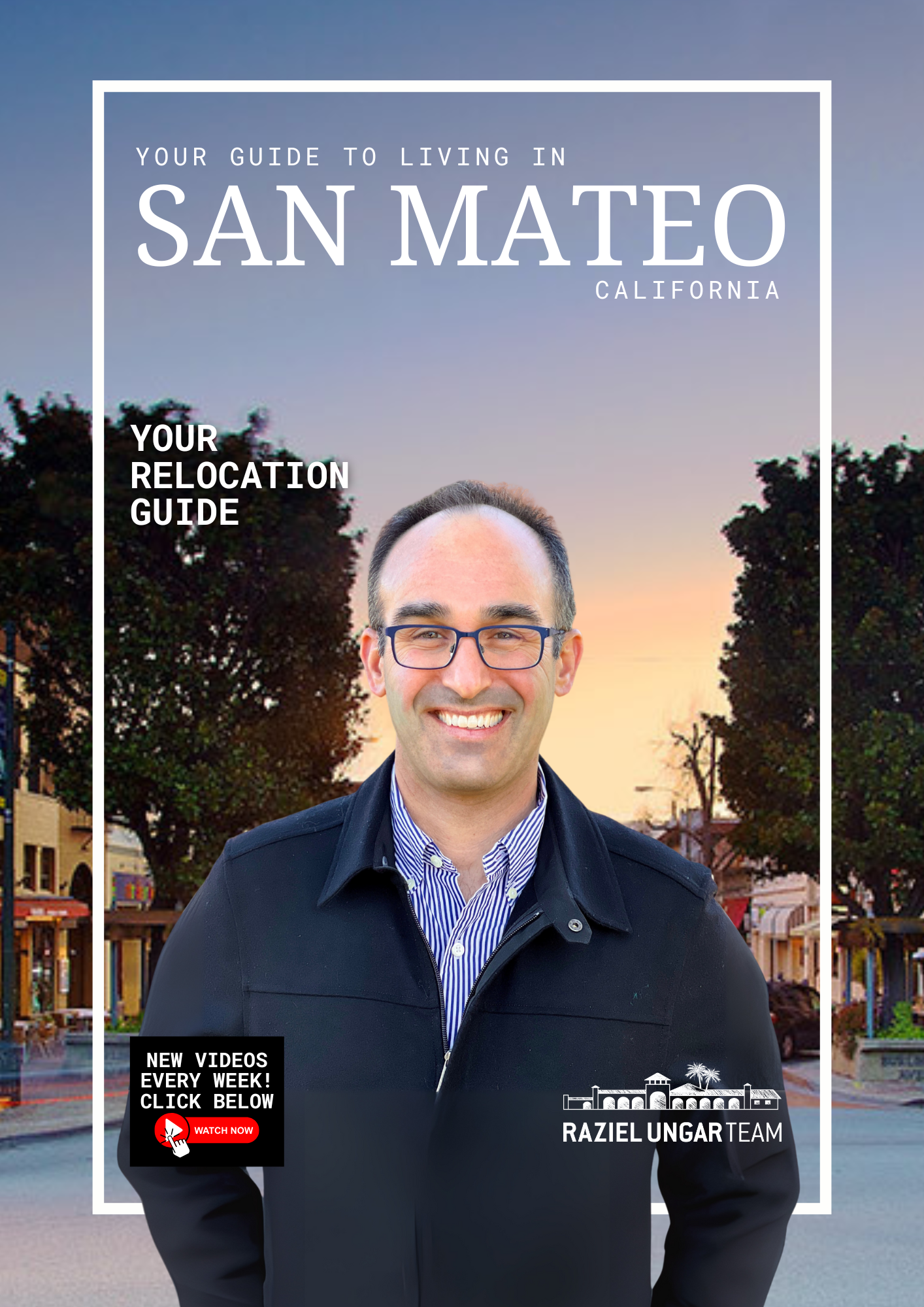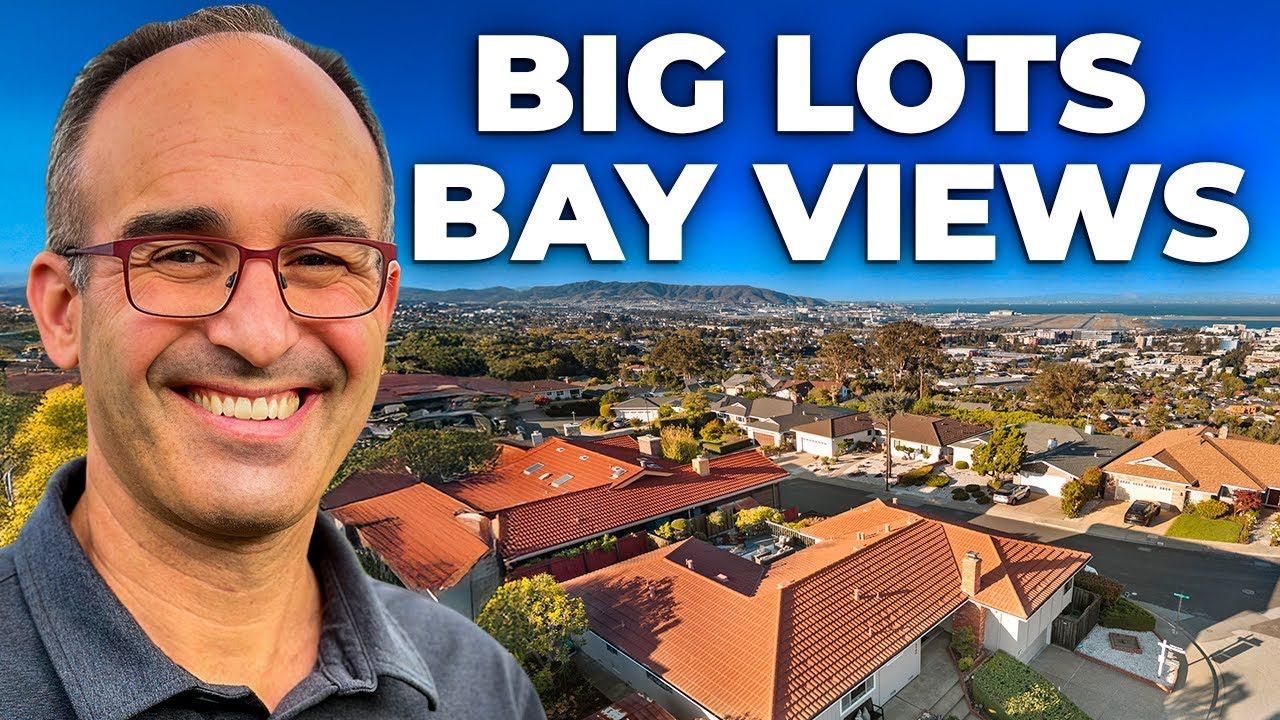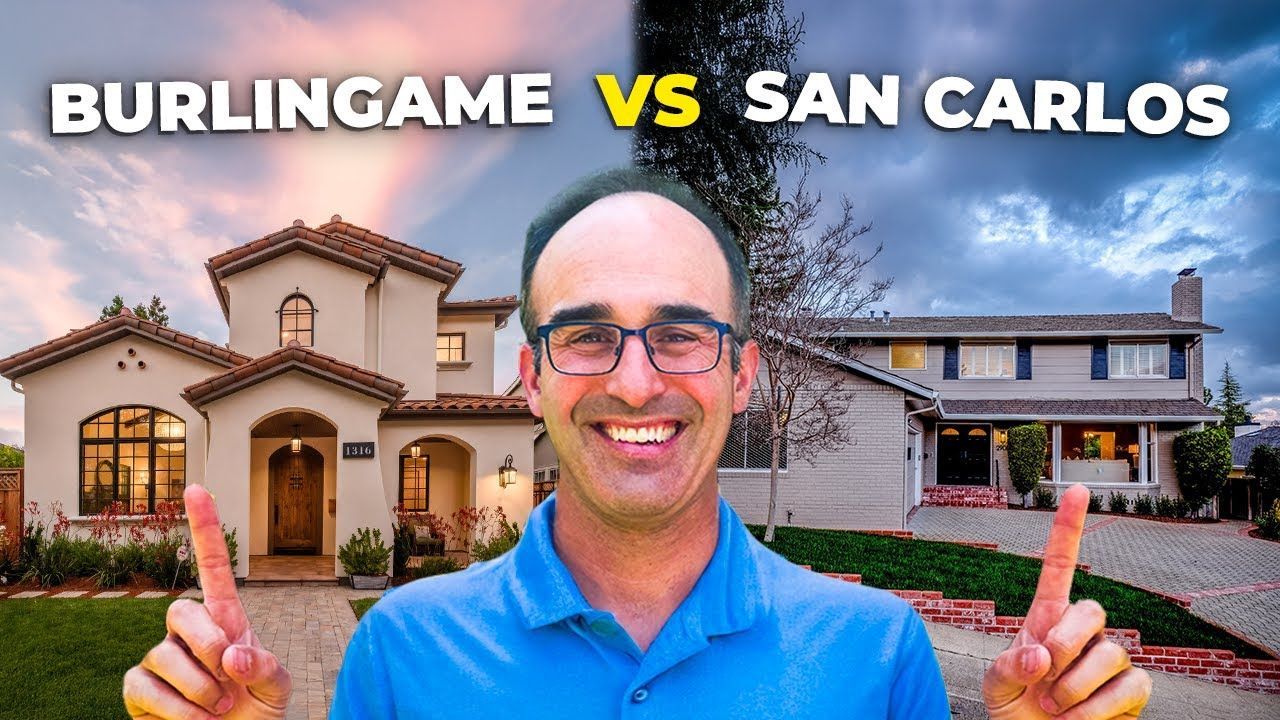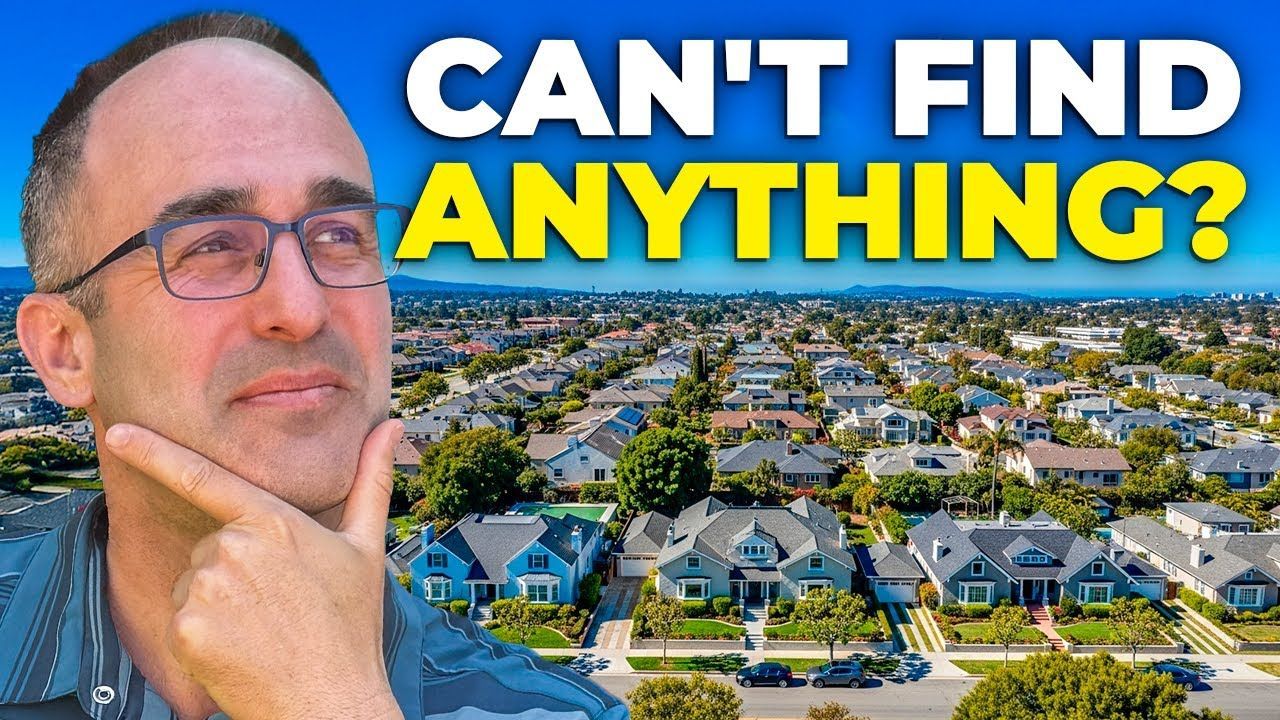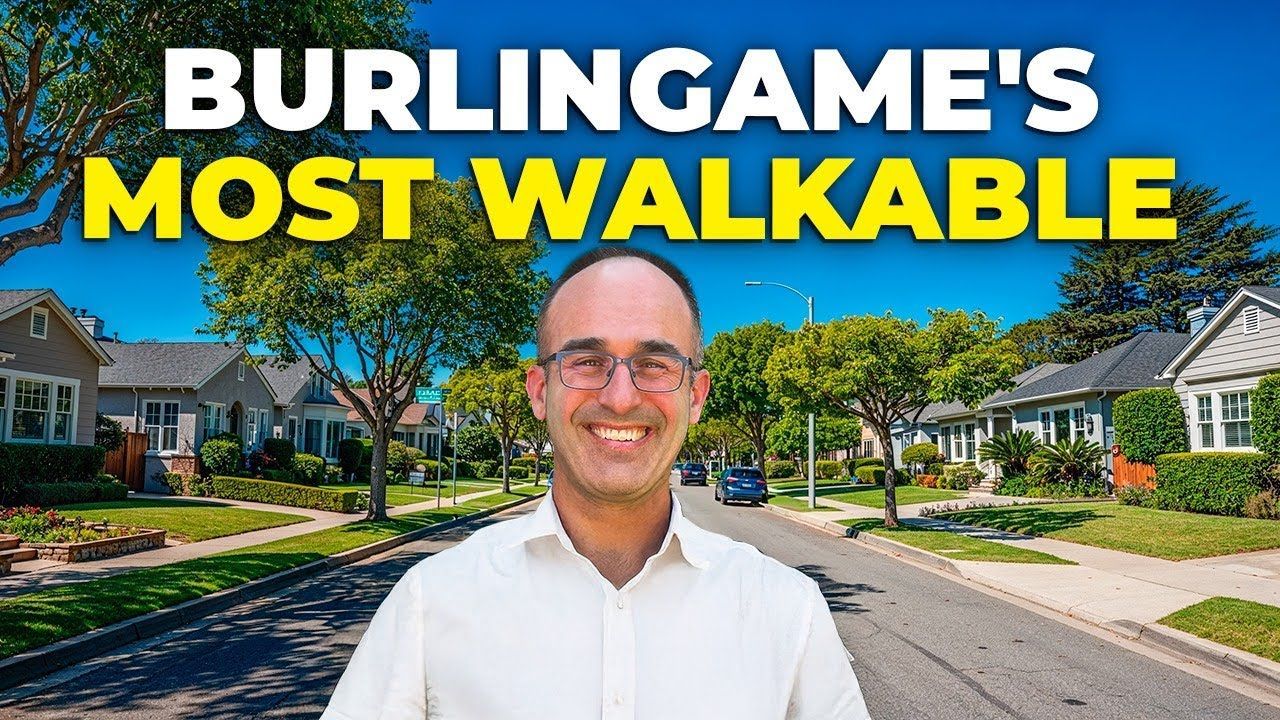Inside Two Stunning Eichler Homes: Why People Love Them (Or Not)
In a recent walk-through I shared on my channel Living In San Mateo County California, I toured two remarkable examples of mid-century Eichler homes on the San Francisco Peninsula. These homes—one in Burlingame's Mills Estates and another in the San Mateo Highlands—illustrate why mid-century Eichler homes on the San Francisco Peninsula are so loved, and why they can challenge some buyers depending on lifestyle and needs.
As a realtor who grew up in Burlingame and who has represented hundreds of buyers and sellers over the last two decades, I’m drawn to the clarity and honesty of Joseph Eichler’s vision. In this article I’ll walk you through the two homes I toured with clients, break down the architecture and construction details that make mid-century Eichler homes on the San Francisco Peninsula unique, discuss the trade-offs you should understand before buying, and give practical tips on renovation and maintenance.
Table of Contents
- Why People Still Fall for Mid-century Eichler Homes on the San Francisco Peninsula
- Tour: Mills Estates Eichler — the Central Courtyard and A-frame Presence
- Design Details That Define an Eichler
- Systems and Maintenance: Radiant Floors, Boilers, and Glazing
- Tour: San Mateo Highlands Eichler — a Down-to-the-studs Renovation
- What to Know Before You Buy an Eichler
- Burlingame and Neighborhood Context
- Practical Tips From My Experience Showing Eichler's
- Conclusion
- FAQs About Eichler Homes on Why People Love Them (Or Not)
Why People Still Fall for Mid-century Eichler Homes on the San Francisco Peninsula
There’s something timeless about mid-century Eichler homes on the San Francisco Peninsula: the open floor plans, the connection to the outdoors, and the honest use of materials. Joseph Eichler set out to build modernist homes that were accessible to middle-class Americans in the 1950s and 60s. He commissioned forward-thinking architects and adopted construction techniques like post-and-beam framing to achieve large open interiors, abundant glass, and seamless indoor-outdoor flow.
When you step into one of these homes you instantly notice how different they feel compared to conventional suburban homes. Interiors are open, rooms flow into one another, and the structural elements—the beams and posts—become part of the aesthetic. These design choices are exactly why mid-century Eichler homes on the San Francisco Peninsula continue to be desirable to buyers who want light, connection, and architectural honesty.

EXPLORE SAN MATEO COUNTY'S COMMUNITIES
Tour: Mills Estates Eichler — the Central Courtyard and A-frame Presence
The first Eichler we toured sits in Mills Estates in Burlingame. This one features a central courtyard or atrium—a hallmark of many Eichler floor plans. The courtyard concept was conceived to bring family life inward, creating privacy from the street and a sheltered outdoor room you can use year-round.
This particular house has a strong A-frame element and walls of glass that open to the courtyard, allowing light to flood the living spaces. The bedrooms, as is common in many Eichler layouts, are a little more compact so that the living areas can remain generous and open. This home is about 2,200 square feet with five bedrooms—an efficient footprint that feels far more spacious because of the layout choices Eichler made.
One of the most striking touches here is the flooring continuity—the owners matched the indoor flooring to the courtyard flooring, which visually stitches the indoor and outdoor spaces together. That maple tree in the courtyard becomes the focal point, and the whole space reads as a single, cohesive room when the sliding glass doors are open.
Price and market notes for Eichler's
In recent years, Eichler homes on the Peninsula have appreciated significantly. While a pristine Eichler in a pocket like Palo Alto might fetch over $5 million, typical ranges for Eichler's on the Peninsula start closer to $2 million and can go up to $3–4 million depending on the level of renovation and the neighborhood. There’s an entire local ecosystem—architects, contractors, and designers—who specialize in renovating Eichler's, and that expertise can make a big difference in both the process and the resale value.
Design Details That Define an Eichler
There are recurring architectural elements that immediately identify an Eichler: post-and-beam construction, flat or low-pitched roofs with deep eaves, expansive glass walls, clerestory windows in many plans, and simple, honest materials like wood paneling and concrete slabs or radiant-heated floors.
Post-and-beam construction is more than aesthetic: it allows load-bearing to be carried by discrete posts and beams, freeing exterior walls from heavy structural duties. That’s how Eichler's achieve walls of glass that blur inside and out. Deep eaves provide shade so interiors stay cool without heavy window treatments, creating a comfortable passive cooling effect. When you combine these elements, you get an interior that feels both airy and protected.
Indoor-outdoor flow and flooring continuity
Eichler's were designed for California living, and nothing communicates that better than flooring that flows between interior rooms and exterior patios. In the Mills Estates home the owners matched flooring materials in and out, which visually enlarges the living area and makes the courtyard feel like another living room. This is not just an aesthetic decision—it’s a lifestyle choice that rewards people who entertain and who enjoy living with the seasons.
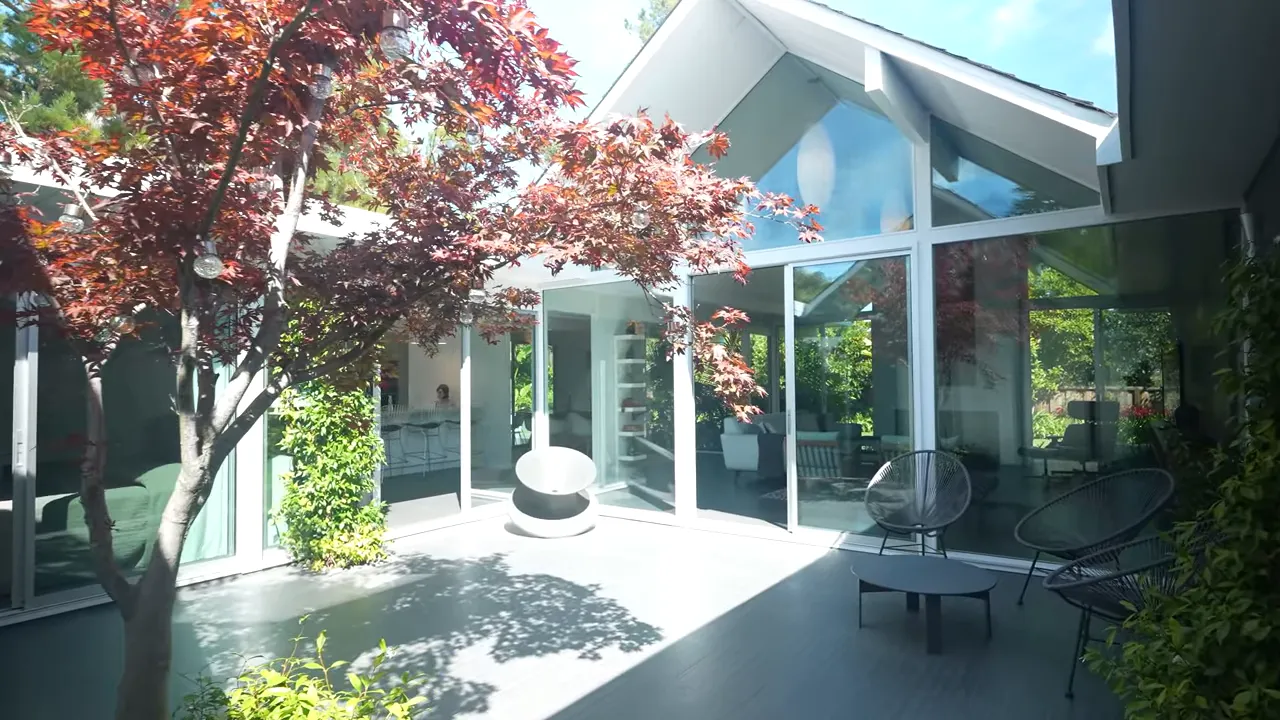
Original finishes and period details
Many Eichler's retain original wood paneling, distinctive light fixtures, and built-in bookcases. Period furniture like Eames chairs often complements the architecture perfectly. If you love mid-century modern design, these homes are essentially three-dimensional showcases for that era.
Systems and Maintenance: Radiant Floors, Boilers, and Glazing
There are practical benefits and practical headaches that come with the era and choices made in Eichler's. One standout system is radiant floor heating. Eichler's often used radiant systems that circulate hot water through pipes embedded in the floor and are powered by a boiler typically located in a garage. Radiant offers even, comfortable heat with no forced-air ducts, which many owners love for both comfort and cleanliness.
But radiant systems require maintenance. Pipes can leak, boilers need periodic pressure testing, and if something goes wrong it can be messy. I once had a client whose radiant system failed while they were on vacation—when they returned, the house had water damage. So, when you are considering an Eichler, arrange for boiler and radiant system pressure testing as part of due diligence. Ask sellers for records or have an inspector verify system integrity before close.
Glazing and tempered glass
Many original Eichler's did not use tempered glass. Modern safety codes have changed, and glass upgrades are a sensible safety and energy-efficiency improvement—especially if you have children. Replacing single-pane glazing with tempered or double-pane insulated glass improves safety and reduces noise and heat transfer. Expect that to be a line-item in a renovation budget if the homeowner hasn’t already upgraded.
Skylights and roof details
Skylights add dramatic light in Eichler's, but they can be maintenance liabilities. Proper flashing and periodic inspection are essential to prevent leaks. When you see skylights in an Eichler, ask to see maintenance records and consider including a roof and skylight inspection in any inspection contingency.
Tour: San Mateo Highlands Eichler — a Down-to-the-studs Renovation
The second home I toured is in the San Mateo Highlands, a neighborhood that contains hundreds of Eichler's built in a coherent development. This Eichler was renovated down to the studs, and the transformation is an instructive example of how modern interventions can honor the original architecture while improving performance and function.
The kitchen was moved and reopened to the great room. Walnut cabinetry paired with white surfaces provides a warm yet contemporary palette. The architect (Plum Architecture) and the owners clearly designed the kitchen with entertaining in mind—drawer solutions, concealed storage, and a thoughtful appliance layout mean hosting 10–12 guests feels effortless.
Post-and-beam construction is proudly on display here. A thirty-foot redwood beam carries the load and creates that iconic dramatic span across the roofline. Deep eaves provide shade and passive cooling, reducing the need for window coverings. The owners told me that they rarely use blinds because the eaves and orientation do the shading work for them.
Landscape and courtyard design
One of the most magical parts of this home is the backyard. The owners worked with a landscape architect to create multiple outdoor rooms: a courtyard immediately outside the glass walls, a casual sitting area, terraced planters with corten steel, and productive fruit trees trained espaliers along the fences. The result is a backyard that reads like an extension of the interior—visible and usable from almost every room.
They planted a Japanese maple in the courtyard and carried porcelain tile from inside to outside to reinforce continuity. They even have a “back backyard” that buffers noise from Highway 280—you can hardly hear the freeway from inside the property thanks to the bermed landscape and careful design.
What to Know Before You Buy an Eichler
Buying one of these homes is an emotional and practical decision. Eichler's deliver exceptional architectural value, but they also come with unique considerations. Below is a checklist of the most common items I recommend addressing when you’re considering a purchase.
- Obtain a radiant heating system pressure test and review maintenance records.
- Check glazing: ask if windows and sliding doors are tempered and insulated; budget to upgrade if they aren’t.
- Inspect roof, flashing, and skylights for water intrusion and proper flashing details.
- Ask about any structural modifications—many Eichler's have had walls removed or reconfigured; verify permits for major work.
- Confirm the condition of original finishes (paneling, built-ins) and determine whether you want to preserve or modernize them.
- Understand that bedrooms often trade off size for generous living space—evaluate whether the plan fits your family’s needs.
Renovation ecosystem
Because Eichler's are a recognized architectural type with passionate owners, there’s a strong renovation ecosystem on the Peninsula—specialty architects, contractors, and suppliers who know how to respect the original design while upgrading systems. If you’re shopping for mid-century Eichler homes on the San Francisco Peninsula, work with professionals who understand post-and-beam construction, appropriate glazing, and the subtleties of maintaining original character.
Burlingame and Neighborhood Context
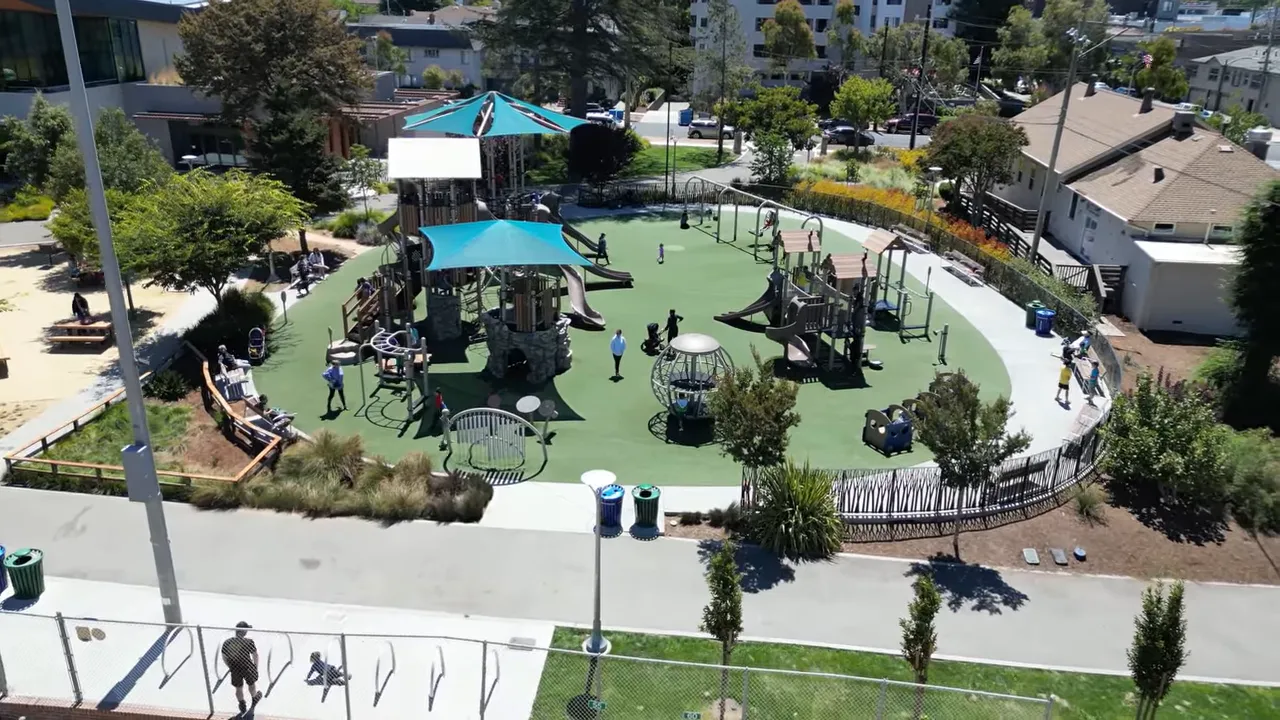
Both homes I toured sit in Burlingame neighborhoods that illustrate why the city is such a desirable spot on the Peninsula. Burlingame has about 30,000 residents, twelve distinct neighborhoods, two main downtowns (one centered on Burlingame Avenue), and beautiful parks such as Washington Park. Proximity to transit, good schools, and an active downtown fabric make these neighborhoods appealing to families and professionals alike.
When an Eichler appears in Burlingame or neighboring cities, it draws attention. The historic architectural significance combined with modern livability makes these houses sought-after. If your priority is an open plan, light-filled living, and that indoor-outdoor California lifestyle, mid-century Eichler homes on the San Francisco Peninsula deliver in spades.
Practical Tips From My Experience Showing Eichler's
After hundreds of home tours and over 600 transactions, I’ve developed a few practical tips that help buyers and sellers of Eichler's:
- Test the boiler and radiant system before closing.
- Consider upgrading glass to tempered or insulated units early in ownership.
- Keep original finishes that add value (like mid-century paneling and built-ins) while modernizing kitchens and baths tastefully.
- Take advantage of the deep eaves and plan landscaping that complements the indoor-outdoor views.
- Hire contractors who have completed Eichler work; they know the quirks and the best materials.
Conclusion
Mid-century Eichler homes on the San Francisco Peninsula are special because they combine modernist ideals with practical California living. Whether you prefer a retained period look or a down-to-the-studs renovation, these homes reward thoughtful stewardship. They’re great for entertaining, they encourage an indoor-outdoor lifestyle, and they feel like architectural statements that age gracefully.
If you love light, a strong connection to the outdoors, and clean structural honesty, an Eichler could be the perfect match. If you prefer more segmented formal rooms, thicker walls, or high insulation as originally built in newer construction, you may find their original compromises challenging. The good news is that with today’s renovation expertise you can upgrade systems and glazing while preserving the things that make Eichler's uniquely lovable.
If you want to explore mid-century Eichler homes on the San Francisco Peninsula further, call or text me at 650-822-7088 —I'd be happy to walk you through the neighborhoods, show you options, and connect you with architects and contractors who specialize in these remarkable homes.
Download Your FREE Relocation Guide
FAQs About Eichler Homes on Why People Love Them (Or Not)
What defines an Eichler house and why are they unique?
Eichler houses are mid-century modern homes developed by Joseph Eichler in the 1950s and 60s. They’re defined by post-and-beam construction, open floor plans, expansive glass walls, deep eaves, and an emphasis on indoor-outdoor living. Their honesty of materials and design makes mid-century Eichler homes on the San Francisco Peninsula uniquely attractive.
How much do Eichler homes cost on the Peninsula?
Prices vary by neighborhood and renovation level, but typical ranges on the Peninsula start around $2 million and can reach $3–4 million or more in top markets like Palo Alto. Pristine or heavily renovated Eichler's in premium pockets can exceed $5 million.
Are Eichler homes energy efficient?
Original Eichler's were designed to be affordable and often have thinner walls and less insulation than modern homes. Many owners upgrade windows to insulated glazing and add modern HVAC or improved insulation during renovations to boost efficiency. Proper glazing and roofing upgrades will significantly improve performance.
What are common maintenance issues to watch for?
Common concerns include skylight and roof flashing leaks, aging boilers and radiant floor piping, single-pane glass and untempered sliding doors, and older electrical systems. A thorough inspection focused on these elements is essential when considering one of the mid-century Eichler homes on the San Francisco Peninsula.
Can Eichler's be modernized without losing their character?
Yes. The best Eichler renovations respect the original architecture—post-and-beam bones, indoor-outdoor flow, and key mid-century details—while upgrading kitchens, baths, glazing, insulation, and systems to modern standards. Working with architects experienced in Eichler work helps keep the balance right.
How do I find an Eichler for sale on the Peninsula?
Work with me , a realtor who specializes in mid-century Eichler homes on the San Francisco Peninsula or who has experience in the specific neighborhoods where Eichler's were built. I can help you track listings, arrange tailored tours, and introduce you to trusted architects and contractors familiar with Eichler renovations.
Raziel Ungar
Your trusted guide to San Mateo County's real estate market. Stay updated with expert tips, neighborhood insights, and the latest market trends to ensure you make informed decisions whether you’re buying, selling, or relocating.
